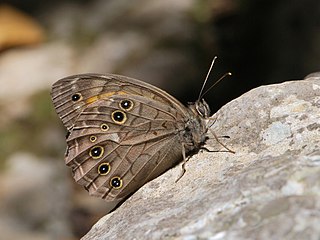
The Epimenides paradox reveals a problem with self-reference in logic. It is named after the Cretan philosopher Epimenides of Knossos who is credited with the original statement. A typical description of the problem is given in the book Gödel, Escher, Bach, by Douglas Hofstadter:
Epimenides was a Cretan who made the immortal statement: "All Cretans are liars."

Epimenides of Knossos was a semi-mythical 7th or 6th century BC Greek seer and philosopher-poet, from Knossos or Phaistos.
In Greek mythology, Rhodos/Rhodus or Rhode, was the goddess and personification of the island of Rhodes and a wife of the sun god Helios.

"Rip Van Winkle" is a short story by the American author Washington Irving, first published in 1819. It follows a Dutch-American villager in colonial America named Rip Van Winkle who meets mysterious Dutchmen, imbibes their strong liquor and falls deeply asleep in the Catskill Mountains. He awakes 20 years later to a very changed world, having missed the American Revolution.
Euhemerism is an approach to the interpretation of mythology in which mythological accounts are presumed to have originated from real historical events or personages. Euhemerism supposes that historical accounts become myths as they are exaggerated in the retelling, accumulating elaborations and alterations that reflect cultural mores. It was named after the Greek mythographer Euhemerus, who lived in the late 4th century BC. In the more recent literature of myth, such as Bulfinch's Mythology, euhemerism is termed the "historical theory" of mythology.

Epimenides is a lunar impact crater that is located in the southwestern part of the Moon's near side, just to the east of the oddly shaped crater Hainzel. Just to the north and northeast is Lacus Timoris, a small lunar mare. The crater is 27 kilometers in diameter and 2,000 meters deep. It may be from the Pre-Nectarian period, 4.55 to 3.92 billion years ago.

Honi HaMe'agel was a tanna or Jewish scholar of the 1st century BCE, the scholars from whose teachings the Mishnah was derived.
The non-canonical books referenced in the Bible includes non-Biblical cultures and lost works of known or unknown status. By the "Bible" is meant those books recognized by Christians and Jews as being part of Old Testament as well as those recognized by most Christians as being part of the Biblical apocrypha or of the Deuterocanon.
Iatromantis is a Greek word whose literal meaning is most simply rendered "physician-seer." The iatromantis, a form of Greek "shaman", is related to other semimythical figures such as Abaris, Aristeas, Epimenides, and Hermotimus. In the classical period, Aeschylus uses the word to refer to Apollo and to Asclepius, Apollo's son.

Kirinia roxelana, the lattice brown, is a butterfly of the family Nymphalidae. It is found in southeastern Europe and the Near East. The butterfly is on wing between May and July. The larvae feed on various grasses.
Bouzyges is a culture hero from Greek mythology, credited with the invention of many agricultural practices; most notably, he was the first man to yoke oxen to a plough and introduced cultivation to Athens. He has been associated with Epimenides.
Parargina is a subtribe of butterflies of the subfamily Satyrinae.

Kirinia is a genus of butterflies of the family Nymphalidae found in Europe and Asia.

Titus 1 is the first chapter of the Epistle to Titus in the New Testament of the Christian Bible. The letter is traditionally attributed to Paul the Apostle, sent from Nicopolis of Macedonia, addressed to Titus in Crete. Some scholars argue that it is the work of an anonymous follower, written after Paul's death in the first century AD. This chapter contains the greetings and instructions for Titus on dealing with deceivers.

Kirinia climene, the Iranian Argus, is a butterfly of the family Nymphalidae. It was described by Eugenius Johann Christoph Esper in 1783. It is distributed in Bulgaria, Romania, Yugoslavia, Macedonia, Turkey, Caucasus, Transcaucasia, Syria, Iraq, Iran and southern Russia.
Karl Friedrich Heinrich was a German classical philologist.

Kirinia epaminondas is a Palaearctic butterfly of the family Nymphalidae. It was described by Otto Staudinger in 1887.

Byleth Eisner is a fictional character in Nintendo's Fire Emblem franchise. They first appeared as the player character and main protagonist of Fire Emblem: Three Houses (2019), and have since appeared as a playable character in the crossover games Fire Emblem Heroes (2017) and Super Smash Bros. Ultimate (2018), being added as DLC in 2019 and 2020 respectively, and as a recurring antagonist in Fire Emblem Warriors: Three Hopes (2022). In each game, players can choose between a female or male version of the character. The male version of the character also appears in Fire Emblem Engage (2023) as an Emblem alongside other Fire Emblem protagonists.










